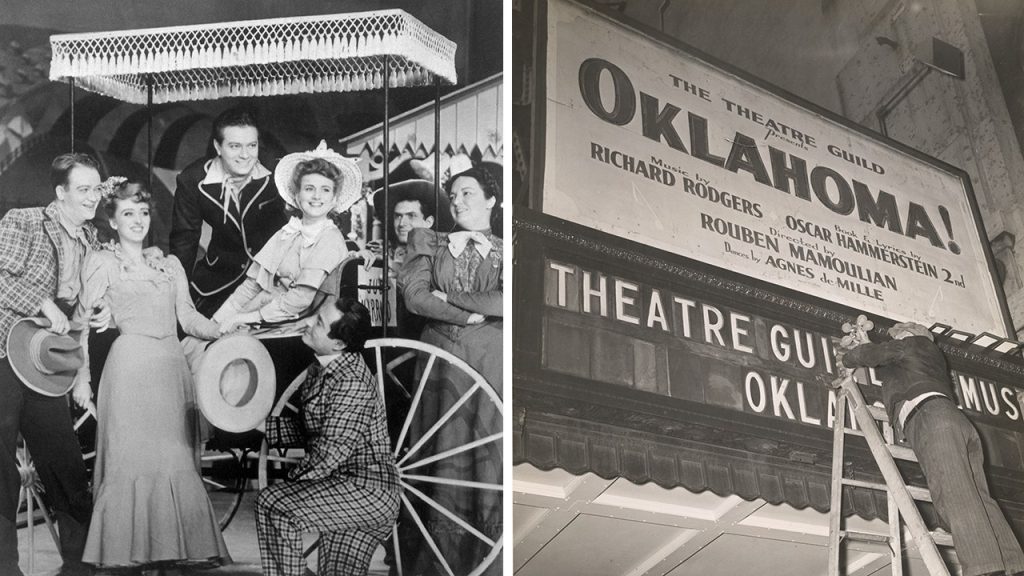On March 31, 1943, the groundbreaking American musical “Oklahoma!” premiered at the St. James Theatre in New York City. This Pulitzer Prize-winning musical ran for almost five years, setting records with 2,212 total performances. This production marked the first collaboration between Broadway legends Richard Rodgers and Oscar Hammerstein II, who went on to write 11 musicals together. Prior to “Oklahoma!” musicals had been more revue-style, lacking a cohesive narrative. The show’s introduction of story-driven songs and integrated dance sequences was revolutionary for its time.
Based on the play “Green Grow the Lilacs” by Lynn Riggs, “Oklahoma!” transformed the musical theater landscape with its innovative format. Rather than opening with grand spectacle, Rodgers and Hammerstein crafted a show that focused on the life of a rural cowboy in America. The musical tells the story of a love triangle between confident cowboy Curly McLain, stubborn farm girl Laurey Williams, and brooding farmhand Jud Fry. Secondary plotlines feature another love triangle and the integration of dialogue into songs to propel the story forward. Choreographer Agnes de Mille added a dream ballet sequence that delved into the characters’ deeper emotions.
Musicals like “Oklahoma!” paved the way for a new style of storytelling in musical theater. By blending song, dance, and dialogue in a more integrated way, Rodgers and Hammerstein revolutionized the genre. The show’s simple Americana theme resonated with audiences during the uncertainty of World War II. The music and lyrics captured small moments of joy and optimism, inviting audiences to join in a journey through pioneer America in 1900. The simplicity and heartfelt sincerity of the show struck a chord with theatergoers and critics alike.
Despite initial doubts from critics, “Oklahoma!” defied expectations and became a hit, enchanting audiences with its sunny optimism and homespun charm. The show’s success led to the first-ever original cast recording and solidified Rodgers and Hammerstein’s reputation as musical theater legends. The musical’s iconic songs, such as “Oh, What a Beautiful Mornin'” and “The Surrey with the Fringe on Top,” have become timeless classics that continue to captivate audiences to this day. By blending storytelling, music, and dance in a groundbreaking way, “Oklahoma!” forever changed the trajectory of musical theater.
Eighty-one years after its premiere, “Oklahoma!” remains a beloved classic that continues to resonate with audiences. The show’s enduring popularity and cultural significance highlight its lasting impact on the world of musical theater. By celebrating the simple joys of life and the spirit of pioneer America, “Oklahoma!” invites audiences to embark on a journey of love, laughter, and hope that transcends time and generations. Rodgers and Hammerstein’s innovative approach to musical storytelling in “Oklahoma!” set the stage for a new era of musical theater and inspired countless productions to come.















